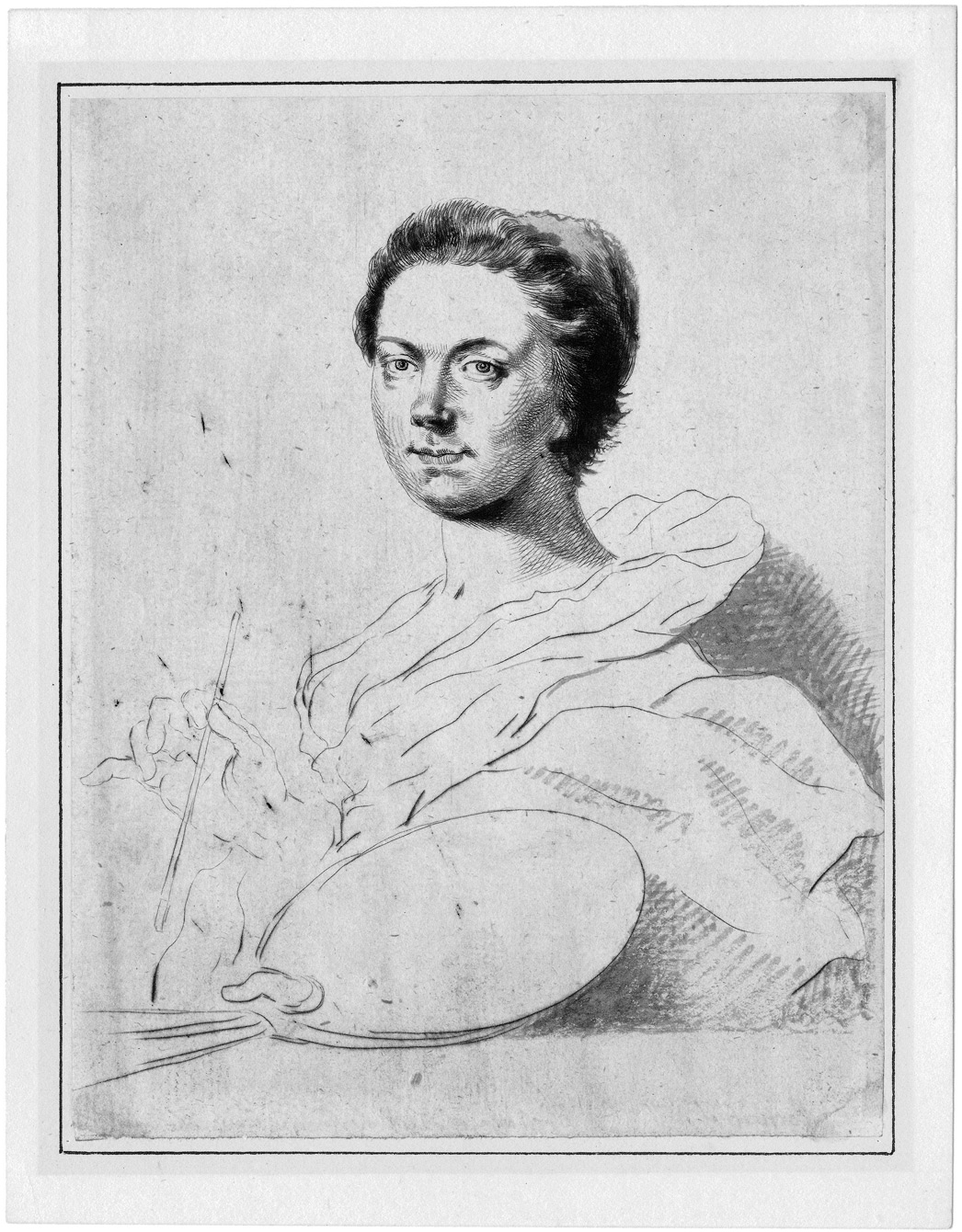Loading the page ...
Thomas Worlidge
(1700 Peterborough – 1766 Hammersmith)
Bust-length portrait of Arabella Worlidge, the Wife of the Artist, with Brush and Palette. Etching and drypoint, reworked with brush and black and gray ink. 15.2 x 11.8 cm. Verso with an inscription in pen and ink “Portrait of Mrs. Worlidge of Bath by her Husband Tho.s”.
The painter and etcher Thomas Worlidge received his initial artistic training from the Genoese master Alessandro Maria Grimaldi (1659–1732), who lived and worked in London and whose daughter Arabella became Worlidge’s wife. After a brief stay in Birmingham, where he worked as a glass painter, Worlidge returned to London in the mid-1730s to study under the engraver Louis Pierre Boitard. During a trip to Flanders and Holland in the company of Boitard the artist became acquainted with the work of Rembrandt, who from now on was to become his most important source of artistic inspiration. So closely did Worlidge seek to imitate Rembrandt’s style that contemporaries took quite a few of his paintings to be works by the Dutch master. From 1740 onwards the artist was mainly resident in Bath, where he made a name for himself by painting and drawing miniature portraits. Worlidge etched numerous works in Rembrandt’s manner, thus contributing largely to the latter’s revival in 18th century England.
The present, uncompleted portrait of Arabella Worlidge is not recorded by Nagler. It may well have been intended as a pendant to the Rembrandtesque self-portrait of the artist dating from 1754, showing him at work in fur coat and beret. In our portrait only the face of the artist’s wife has been worked out in any detail and given depth by simple cross- and parallel-hatching, while the body and hands are only shown in outline. A fine pattern of crosshatching in pencil is visible on the face, while the hair and headdress of the sitter and individual parts of her clothing as well as the background have been reworked with swift brushstrokes. This delightful little print has the charm of the unfinished and exudes the spontaneity of a primo pensiero.
